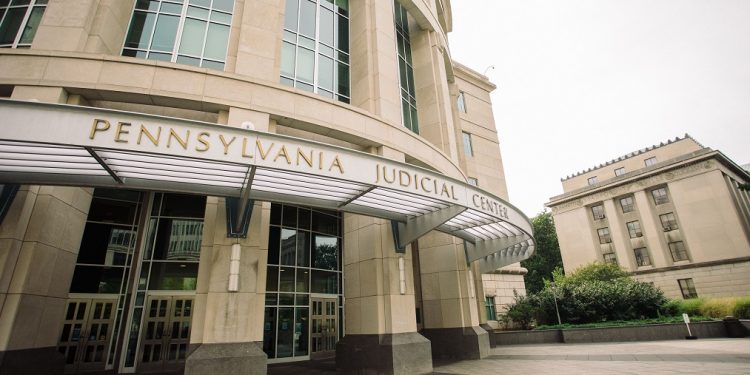Teams representing top lawmakers and average Pennsylvanians widely agree on the basics of a good map but differ on how to weigh factors like partisan fairness.
Kate Huangpu of Spotlight PA
This article is part of a yearlong reporting project focused on redistricting and gerrymandering in Pennsylvania. It is made possible by the support of Spotlight PA members and Votebeat, a project focused on election integrity and voting access.
HARRISBURG — Teams representing Gov. Tom Wolf, state Republican lawmakers, and other groups of Pennsylvanians spent much of Thursday explaining to a judge why their proposed congressional map is the best, widely agreeing on the basics but differing on how to weigh factors like partisan fairness.
Their testimony kicked off at least two days of hearings in Commonwealth Court on district lines that could affect the balance of power in Washington for the next decade.
The state court system is set to pick the next map just days after Democratic Gov. Tom Wolf vetoed a proposal sent to him by the Republican-controlled legislature. Because of Pennsylvania’s sluggish population growth over the past decade, the state will lose one of its 18 seats.
Anticipating that Wolf and the General Assembly would be unable to agree on a map in time to keep the May primary on track, two suits filed in December asked Commonwealth Court to take over the redistricting process.
In response, the court issued a Jan. 30 deadline to complete the map while also soliciting proposals from the petitioners, Wolf, top lawmakers, and other approved parties in preparation to take over the process. In total, more than a dozen maps were submitted.
The court could rule as soon as this weekend. But first, each of the proposals will get a thorough airing in front of Judge Patricia McCullough, elected in 2009 as a Republican. Her ruling will likely be appealed to the state Supreme Court, which has a 5-2 Democratic majority.
Here’s a recap of what happened on Day 1, with rolling updates from Day 2.
The Carter petitioners’ map
The first map examined Thursday was offered up by a group of citizens who live in densely populated areas.
Jonathan Rodden, a political science professor at Stanford University, drew a proposal that hews closely to the existing map. That map was implemented by the state Supreme Court in 2018 after the justices threw out Republican-drawn districts they found were drawn for partisan benefit.
Because the high court deemed the current congressional map selected as exemplary, Rodden wanted to create a proposal as similar as possible while adjusting it for population changes.
Despite significant population change, 87% of residents would stay in the same district as the current map.
Read the submitted analysis here.
The Gressman petitioners’ map
The second map was offered by the Gressman petitioners, a group of mathematicians and scientists from across the state.
The petitioners designed the map to perform optimally in all four base criteria — compactness, contiguity, equal population, and minimal county splits — while considering other redistricting principles such as partisan fairness and minority representation.
“If the court chooses our plan, the court doesn’t have to choose between Democrats and Republicans,” said Jessica Amunson, the lawyer representing the petitioners. “The court doesn’t have to choose between the legislative branch and the executive branch.”
Read the submitted analysis here.
The Wolf map
A map submitted on behalf of Wolf was released to the public earlier this month. It fulfills the required criteria outlined by the state Supreme Court and emphasizes partisan fairness.
Expert witness Moon Duchin, an associate professor of mathematics at Tufts University, said Wolf’s map does better in partisan fairness overall than all other proposed maps.
Read the submitted analysis here.
The state Republican lawmakers’ map
This map was passed through the legislative process, initially drawn by Amanda Holt — a noted redistricting advocate and former Lehigh County Commissioner — and championed by state Rep. Seth Grove (R., York).
Wolf vetoed it earlier this week, criticizing the map’s lack of partisan fairness and the way it split areas such as Philadelphia and Luzerne County.
Republican lawyers and experts emphasized that partisan fairness can only be achieved by diminishing other criteria, as Republicans have an inherent geographical advantage in Pennsylvania. All the proposed maps perform comparably to the current congressional map, which the state Supreme Court deemed exemplary, in neutral metrics.
Read the submitted analysis here.
This story will be updated throughout Friday.
WHILE YOU’RE HERE… If you learned something from this story, pay it forward and become a member of Spotlight PA so someone else can in the future at spotlightpa.org/donate. Spotlight PA is funded by foundationsand readers like you who are committed to accountability journalism that gets results.



